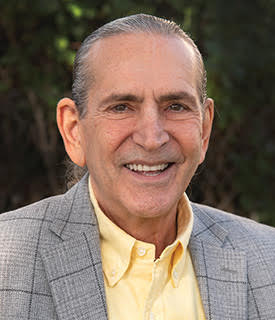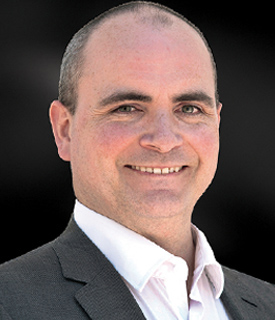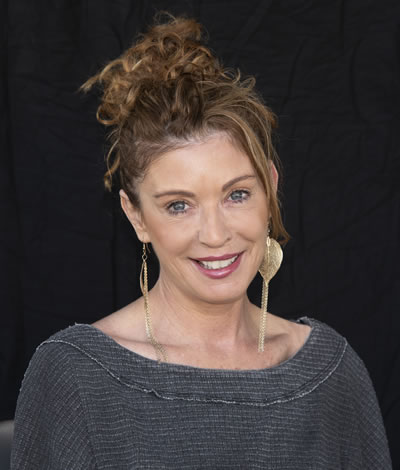What is Group Therapy
Either in a movie or TV show, you’ve probably seen people sitting in a circle, holding styrofoam cups with coffee, and a moderator asking, “so Jim, how about you? What do you think about what Kathy said?” For many of us, this is our knowledge or group therapy. Though there are groups that are structured like this, there are also a lot of groups that are not.
Purpose of Group
One of the main benefits of group therapy is that there are other individuals that can empathize, understand, normalize, and support you. This is one of the main purposes of group therapy. Depending on the specific task or objective of the group, the structure can vary:
- Support Groups: These groups are often primarily for support. They may or may not be led by a professional. Regular people can get together to form a support group. Common reasons for creating a support group are to help with grief or loss, divorce adjustment, or chronic illness.
- Educational Groups: This group is often led by some kind of professional or expert of the topic. The intention is to educate regarding a specific topic. For example, a counselor might lead a parenting group to teach basic care of infants to teen moms. The structure of this group might have more activities, instructing from the lead moderator, and may have specific topics covered each weak.
- Therapy Groups: Therapy groups are led by a mental health professional. Psychotherapy modalities and interventions could be applied to assist the members of the group rehabilitate. A therapy group would often be beneficial for sex abuse survivors, where it is vital that the group is emotionally safe.
- Socialization Group: This group is established to help promote socialization or social skills. A common reason would be to help with bullying and building friendships.
Things to Consider About Group Therapy
- It may be helpful to know if your group is “open” or “closed.” Open groups allow anyone and anytime. Closed groups often have requirements, you may need to take a survey or complete an interview before being allowed to the group, and there are certain periods of time when you can join a closed group.
- Depending on your situation and reason for wanting to attend a group, you may want to decide if you would like a group facilitated by members or a professional.
- Some groups require varying levels of commitment. Some groups do not allow absences and absences will result in being dismissed from the group. Other groups may require that you complete homework assignments.
- Group size also varies. You might want to consider the size of the group. Too little people and it may be difficult to get the flow of the group and too many people make it difficult to get a word in. For many groups, the ideal number of participants is 6-12 participants.
All in all, group therapy can be a very positive and powerful experience when you find a group that suits you and your needs. Be judicious, but also courageous to try and give group a shot.
Mommy and Daddy After Dark - Sex and Marriage
Sex and Marriage. Many think the two go together, “like a horse and carriage.” Whether you are a mommy & daddy, mommy & mommy, or daddy & daddy you probably know that sometimes the horse is in the barn while the carriage got chopped up for firewood. For some married couples, the sex gets cold or maybe it was never hot to begin with. If this sounds like you and your partner after dark, know that you are not alone. Many go through dry spells, weeks, months, or even decades.
There is so much about Sex and Marriage on the internet, in books, in movies, and on TV. Where do you even start? I would suggest to start with your spouse. Start by having a heart to heart and talk about where the disconnect is happening. Your sex life could be struggling for SO MANY reasons. In order to find out what solution you need, you first need to know where the problem is.
Sex and Marriage: Potential Problems
- Physical - If sex became physically uncomfortable or difficult there could be a variety of reasons and sexual dysfunctions. Women could be suffering from vaginismus or vaginal spasms, infection, pregnancy, vaginal dryness, and more. Men could struggle with erectile dysfunction, premature ejaculation, or delayed ejaculation to name a few.
- Emotional - When dealing with emotional issues it is likely to affect the sex life. Some turn to sex to cope with emotional hardships, while some want nothing to do with sex when they are experiencing an emotionally difficult time. Often, sex is an emotional act, that’s why it is sometimes referred to as, “making love.” It makes sense, if emotions are off, if there is a disconnect in the marital relationship, there is probably a disconnect in the bedroom.
- Trauma - Regardless of how recent or long ago a traumatic event was, trauma can seriously inhibit a healthy sex life if the trauma was left unresolved. Trauma can alter sexual expectations and skew perceptions of sex. If trauma is the source or contributing factor to sexual difficulty, seek professional mental health support.
- Medical - Some medications and illnesses adversely affect sexual performance. Talk to your doctor about side effects of medication. In some situations a doctor can prescribe medication to help assist with your sexual performance. In other situations, a doctor may inform you that sexual activity is not safe for your condition.
- Mental Health - Just about all mental health issues can affect your sex life. Depression, anxiety, eating disorders, and schizophrenia might suppress sexual desire. Personality disorders and bipolar might heighten and even provoke high risk or promiscuous sexual activities. A mental health professional can assist in finding balance and understanding with mental health issues and sex.
- Education - You may not know as much as you think about sex. There is more to sex than, this part goes here and boom, you make a baby. Do you know the anatomy of the male and female reproductive systems in depth? Men and women reproductive systems are very different and vary in sensitivities. Everyone feels and perceives pleasure differently. Not only is it important to know the general male/ female anatomy; but, know your partner’s specific anatomy. Talk about what feels good, what you like, what you don’t like. Good sex might be more than what’s below the waist. Know each other’s fantasies, turn offs, and limits.
No matter what the issue is, it may be helpful to have a third person professional facilitate conversations between partners. There is absolutely no shame in seeing a therapist for sex and relationship advice. If you and your loved one are finding struggles after dark, please contact Crownview Medical Group to get in touch with a trained professional who can provide some help advice based on your particular needs.
ANGER!
ANGER!
We all get grumpy, hangry, cranky, moody, and straight up pissed off. Anger is a normal emotion for us human beings. Anger is a spectrum. Some of us feel it more intensely, more frequently, or for longer durations than others. Nevertheless, it is an emotion that we need to live with and learn to cope with.
dANGER
Before going into potential coping ideas and resources, it is important to acknowledge and recognize that anger can lead to dangerous situations. Anger is often the emotion behind violence and abuse. Beneath the anger, is more often than not, hurt and pain. If your anger is sometimes manifested with violence, abuse, substance abuse, or dangerous living, seeking out professional mental health assistance is best. In the situation of a crisis, such as having serious thoughts to harm self or others, call 911 or go to a hospital for immediate medical attention.
Coping Skills
There are so many ways to learn to cope with anger. Children learn from the children’s show Daniel Tiger, “When you feel so mad you want to ROAR, take a deep breath and count to 4.” (http://pbskids.org/video/). Surprise, this can work for teenagers and adults too. It may seem cheesy to think this comes from a children’s show-- but, there is power in delaying your anger. Sometimes the anger is so prominent in that instant that we act irrationally. Delaying the anger and giving your brain time to catch up with the emotion may help you to process and think clearer.
Even better, try to not only delay, but distract yourself from the anger. If you can, go exercise and blow off some steam, vent to a friend, write in a journal, eat something yummy, punch a pillow, watch a show, whatever works for you. Give yourself some time to climb back to reality so you can think rationally how to handle the situation that was so enraging. This could spare you some headache, heartache, regret, and embarrassment.
Preventing Anger
First, take care of yourself. You will find that you are a lot more patient and better equipped to face anger provoking situations/ people when your belly is full, body rested, mind clear, and relationships satisfied. In a high stress or anger prone lifestyle; prioritize your meals, exercise, health, and relationships. I know that’s asking for a lot for those with a busy life; but, know yourself and where you need to prioritize in order to be a little less grouchy.
Second, check your expectations. Often anger is a product of unmet expectations. Parent is angry because the kid didn’t meet the expectation of fixing the bed in the morning. Kid is angry, because parent didn’t meet the expectation of, “letting me live my own life because--HELLOOOO I’m 15!” Here are two ways around this. 1. Get the expectations met. 2. Change the expectations.
Depending on the situation, sometimes it’s easier to change your expectations rather than getting them met-- especially if your expectation needs to be fulfilled by another person. Sometimes, you cannot change your expectations; in this case, one must learn to become very persuasive. Take time to evaluate the triggers of your anger and decide, is this an expectation that is negotiable or non-negotiable. You can collaborate with the person who infuriates you to brainstorm expectation adjustments. Feel free to use your creativity!
If you or a loved one struggles with anger, please contact Crownview Medical Group to get in touch with a trained professional who can offer some helpful advice for your particular needs.
Slow money
Slow Money
The road to recovery is a long and bumpy one. There are many resources to provide emotional, mental, and even spiritual help for those trying to pursue sobriety. One aspect of recovery that sometimes is overlooked is adjusting to “slow money.” You are probably familiar with the term “fast money.” For some who struggle with addiction, they found that selling drugs, gambling, and hustling in various less than legal ways can be quite lucrative. The cash flow can be fast and abundant with little effort; but, high risk. Thus, when returning to an addiction free life, working a 9-5 minimum wage job is going to feel like “slow money.”
Adjusting to a New Speed of Money
One of the first steps you can take in trying to adjust to this new financial lifestyle is reworking your budget. It can be devastating and feel almost paralyzing to realize that your checking account is zero with bills and rent to pay.
It may be time to make a list of luxuries vs necessities. Your definition of necessity now needs to become, “I cannot survive without this...literally.” Drinks other than water, Netflix, motor vehicles, smartphone, and many other items that many of us feel like, “I cannot live without this” might need to become something that you do live without.
The adjustment might be sudden and abrupt in some situations. Beware that this could be a major trigger for relapse, so try to plan for it and discuss it with your therapist or substance abuse counselor.
What Financial Resources Are Available?
There are many federal, state, and private programs that can assist financially. Programs such as SNAP (supplemental nutrition assistance program) and TANF (temporary assistance for needy families) are government programs that help provide money for food and even cash for those who qualify.
WIC (women, infants, and children) provides food for pregnant and breastfeeding women, infants, and children under the age of 5.
Seek out local charities, churches, and nonprofits that often provide assistance in the form of food, vouchers, clothing, even rent assistance. Some agencies also provide financial coaching.
Increase the Speed of Your Cash
You may need to start from the bottom and work your way up, but there are ways to beef up your paycheck.
Go back to school, seek higher education, and higher paying jobs. Going back to school can be very intimidating, but there are federal grants, loans, and scholarships to help pay for you to go back to school.
Learn a trade. Seeking out a 4-year-degree is too long for some. Trade or vocational school can assist you in learning a skill for a specific occupation. Trade schools vary in length depending on the program and can be as short as 8-months and as long as 2-years.
Find a job with opportunity for advancement. When interviewing for jobs, ask about opportunities for advancement and pay attention to jobs that value professional development. Some jobs pay their employees to get extra trainings, earn certificates, and grow within the company.
From Chasing the Highs to Escaping the Lows
Most if not all of those who use, will remember their first “high.” Often that first high was the best high and one continues to use to try and achieve or relive that same high. For many, it cannot be obtained, and they move on to a harder drug or a greater dosage. This phenomenon is called chasing the high.
When in recovery and when without synthetic chemicals, there really isn’t anything in the natural world that can mimic the dopamine illusion that drugs play on the brain.
Coming down from a high and back into a reality that may be less than ideal can be severely depressing. Tables turn quickly from chasing to feeling like being chased by a dark depression. It may feel like one cannot escape this heavy lowness.
“Will I be happy again?” is a common question that many will ask themselves or ask out loud. The answer is, “Yes, you can be.” Here are a few things that can help.
Antidepressants
One of the first things that could possibly be helpful is to see a physician about anti-depression medication. Many are very nervous about medication when trying to eliminate chemicals from their body.
For this reason, it is imperative that those in recovery are completely transparent and honest with their physician about their substance abuse history. This way, your health provider can responsibly manage medication.
Though it might seem scary to take medication in fear of triggering a relapse, recognize that depression can be a major trigger for relapse. An antidepressant is considered “non-addictive” unlike opiates or other drugs.
Therapy
For some, the reason drugs was sought after was to run away from or try to avoid an unpleasant reality. Trauma, grief, stress, boredom, anger, etc. are all common things that can lead a person to trying drugs.
Drugs, however, do not solve problems. Forgetting about a problem doesn’t make it go away. When setting back into reality, the problems that were left behind are waiting for your when you return.
A therapist can help process difficult events, assist in learning how to cope with negative emotions, gain skills to manage the hardships, and put a plan together for facing trying situations.
Find New Joy
Though the natural and sober world does not have synthetic highs, it does have real and genuine ones. A “natural high” may not be as rapid and intense; but, it is real, lasting, healthy, and long-term. Seek out natural highs and find new joys in life, or revive old joys that were sober and positive.
Things like exercise, eating delicious food, and having positive interpersonal relationships are activities that naturally produce feelings of happiness in your brain.
It may be helpful to get a gym membership, enjoy the outdoors, invest in cooking delicious and healthy meals, get a pet, make new sober friends, and explore new hobbies.
It may not be instant, but with consistent effort, happiness can be found.
If you or a loved one struggles with substance abuse please contact Crownview Medical Group to get in touch with a trained medical professional.
Stop Putting Off Your Procrastination Problem
Stop Putting Off Your Procrastination Problem
Procrastination -- some call it an art, while others consider it a problem. There are those that seem to be genuinely not stressed by the fact that they’ve set aside a major payment, project, or life decision for days, weeks, months, you get the point. There are also those who use procrastination to AVOID the stress or consequences of having to face the issue at hand. In either case, stress is usually at the end of that tunnel.
Procrastination isn’t all bad though. Sometimes we intentionally procrastinate. Some might call it priority setting, to take care of more important things. So where is the line between “healthy” procrastination and it being a problem?
Procrastination Art vs Problem
One of the biggest ways to assess if your procrastination habits is an art or problem is to look at the fruits of your procrastination. If you put something off, but eventually tackled it and felt like you took a path of least resistance, then you may be a procrastination artist. Sometimes we need to put our sanity first and prioritize our self care. It won’t be the end of the world if you folded the laundry a day or three later so you could take a long bubble bath one night and had a night out with friends the other.
If your procrastination tree is yielding fruits of stress, affecting your health, the health of those you are in charge of, your job, or interpersonal relationships, you may be in the realm of “room for improvement.”
How to Not Procrastinate my Procrastination Problem
Depending on your specific circumstance, some can tackle this sans a mental health professional. In some circumstances, procrastination can cause some serious detriments on your physical and mental well being, such as: not paying rent to the point of eviction, not keeping personal hygiene to a noticeable level, or consistently missing deadlines, thus jeopardizing your job. In those situations and those of similar severity and nature, it may be, there are some other mental health issues at play such as: anxiety, depression, phobia, or others. Seeing a professional mental health counselor, attending group therapy, or even a social worker if there are some social economical issues inhibiting your ability to change could help.
Some DIY tips to help with procrastination could be:
- Take a deep breath and just start. Even if it is SMALL, I’m talking like, you made a list. Sometimes, once we start, the momentum gets us, and before you know it, BOOM, you’re done!
- Reward yourself. You made a list, good job, you started, eat a piece of chocolate or whatever. Maybe set in your mind a grand prize if you get the grand task completed. You can condition your noggin to associate working with positive happy reward.
- Chunk your work. If the project is big, it may seem overwhelming, sinking you into that dark spiral of avoidance. Break your work down to bite size pieces.
- Wake up early. Are you so crazy busy and there just isn’t enough hours in the day? Know yourself and wake up an hour or 15 minutes early, whatever you can do, and set that “extra” time to be 100% devoted to the object of your procrastination.
- Spread the word. It might help if you tell someone what you’re doing. Set some goals and tell someone about it. You can ask them to check in with you and help you stay accountable.
Whatever your style may be, find what works for you and good luck, tomorrow, when you take on your procrastination.
Kidding, go do it right now, don’t wait for tomorrow. Carpe diem!
If you’re really struggling with procrastination, focusing, time and stress management, prioritizing, please contact Crownview Medical Group. We have many great trained professionals who can help propel you forward.
Marriage Counseling - What to Expect
Marriage Counseling - What to Expect
Marriage counseling has a bad rep. The stigma is THICK and negative when it comes to couples therapy, when it really shouldn’t be. Marriage therapy, couples counseling, whatever you want to call it does not need to be shameful and secretive. Some people think, “if I go to marriage counseling, people are going to think we’re getting a divorce.” FALSE! Things do not need to be bad in order for you and your partner to attend couples therapy.
It is helpful to attend therapy, yes, in hard times; but also, in times of transition. Just got engaged, expecting a baby, new move, new job, death of a loved one, etc. are factors that can influence a relationship and may be times when having a third neutral party to help you process and facilitate healthy dialogue with your darling could be beneficial.
Here are some common concerns couples have:
What’s going to happen?
The first session is generally an introduction, a chance to get to know your therapist and they get to know you. The therapist may want to have some background information such as your culture, religion, upbringing, mental/ physical health issues, substance use, sexual background, and other information that might be relevant. Some administer surveys at all or some of the sessions to track your progress.
Your therapist will probably have a modality or therapeutic framework in which they conduct couples therapy. Common modalities of couples therapy are:
- Emotionally Focused Therapy (EFT): http://drsuejohnson.com/emotionally-focused-therapy-2/what-is-eft/
- Gottman Method: https://www.gottman.com
- Solution Focused: https://solutionfocused.net/what-is-solution-focused-therapy/
- Cognitive Behavioral Couples Therapy (CBT): http://www.apa.org/pubs/videos/4310765.aspx
There are other effective modalities of therapy. Your therapist may use a variety of techniques to try and tailor sessions to you and your partner’s needs.
Will anyone find out I’m going to couples therapy?
Legally, your therapist is bound to confidentiality. The only time a therapist will breach that confidentiality is if you or someone else is in danger by withholding information. If you and your partner decide to keep a secret, no one will know.
How long does this last?
Most sessions are 50 minutes long and can be as brief as 8 sessions. Depending on you, your partner, the issue, your finances, and availability of therapist, sessions can be weekly, bi-weekly, monthly, every few months, and can go on for years. It is up to you and your therapist.
Will I always attend with my partner?
This depends on the style of the therapist and the couple. Some situations it is helpful to have individual sessions in combination with couple sessions. Some therapists, prefer to work with the couple as a set because it’s effective for that couple, to avoid triangulation, or even avoid the appearance of triangulation.
It may be helpful to have separate therapists, as in a therapist for individual therapy and a therapist for couples therapy. If you wanted collaboration and therapists are willing, you could sign a release form to allow your therapists to consult with one another. This is an individual preference and in some situations not feasible.
You probably have many more questions, but it doesn’t hurt to schedule an initial session to test it out. As each therapist is an individual, it would be best to address your questions to the specific therapist and see if it is a fit for you and your loved one. If you’re considering marriage counseling, please contact Crownview Medical Group to get in touch with a trained medical professional.
We all have problems. Every couple fights, that is no secret.
**If you are in a relationship where there is abuse please do not hesitate to call the domestic violence hotline. 1-800-799-SAFE (7233)
Preventing the Pre-Teen Parent Breakup
Preventing the Pre-Teen Parent Breakup
Something happens to a child when they transition to becoming a teen. Part of that transition for many becomes, “Mom/ Dad, don’t talk to me, you’re not cool enough.” Whether that is vocalized or expressed in a single glare, many parents and teens go through, what feels like, a divorce. Your tween/teen may not want anything to do with you except for your visa, car keys, and refrigerator. While this phenomenon may not be 100% preventable, there are precautions that can be taken. Here are a few suggestions:
Start Young
Invest in your child early on. Don’t wait till they’re the captain of the football team with a full-ride to your alma mater to realize that they are a cool kid. Let your kid know that they were ALWAYS a cool kid and show them that no matter how young.
Have Play Time
Set aside time everyday, or every week for just 100% play where your child is in charge. Try to avoid asking questions or giving suggestions. Let your child be the boss during this one-on-one (try to keep it one-on-one even if you have other children) play session. Recognize and validate their emotions. Turn the phone to silent and just be with your child uninterrupted and without distraction.
For those interested, there is training for parents to learn how to do a form of play therapy with their child. This is called Child Parent Relationship Training (CPRT). There are professionals throughout the nation that are certified in training parents in CPRT.
Be a Safe Person
There is a balance between being too nice and too harsh. Some parents are so afraid that they’ll ruin their relationship that they don’t set any boundaries or have any consequences. This is dangerous, because you could end up with a wild child that runs all over you. It could also be detrimental if all you do is nag, scold, yell, and reprimand. Your child might fear your judgment and may not feel comfortable coming to you. Set boundaries, have consequences, and be consistent. It helps if your child understand the consequences to their actions. Also avoid calling your child names, build them up, and when they do come to you with something heavy, listen. Your inner parent may be jumping out of your skin in rage, try to keep your cool, focus on your child’s emotions, and take rational steps. Whether they are mad that the princess crown broke (because this could be a major crisis) or got their girlfriend pregnant, treat your child and their concern with respect and love.
If you’re struggling with maintaining a healthy relationship with your teen or perhaps they’re acting out more than usual, please contact Crownview Medical Group. A trained medical professional can help you and your family find peace and harmony again.
My Best Friend ED: Eating Disorders
My Best Friend ED
Eating Disorders (ED) are ever prevalent in this day and age where beauty, image, sexiness, trend, and youth are ever sought after and paid for. With just a flick of the finger, one can have access to billions of pictures of men and women at their best; leaving you with a feeling of longing and inadequacy. Some, in search for control, beauty, affirmation, or to cope with pain turn to ED.
Is ED a friend?
ED is like a friend that you love and hate. From the outside looking in, a lot of people don’t get it. They don’t understand that having an eating disorder isn’t something that you can just QUIT. Some want to stop, some don’t. For some ED is like an addiction. ED provides comfort, overeating can provide emotional comfort. ED provides control, by restricting, overexercising, vomiting, there can be a sense of controlling the body when other things are out of control. ED can be a way of feeling special, especially when people notice and compliment weight loss. ED can also numb out emotional pain.
Those with an eating disorder likely have pain, shame, and hurt that is more than skin deep. Thinking is often black and white, polarized, and extreme. “My lips are too thin, I’m so ugly.” Everyone at some point criticizes their appearance and may want to improve a part of their body; but, when friends with ED, it’s hard to isolate a single flaw. Instead singular flaws are overgeneralized to entire body image or identity.
What does ED look like?
ED is more than anorexia and bulimia and more than stick skinny girls. Especially with the wildfire of social media, ED knows no gender, age, race, or size. Someone who may look completely healthy could have an eating disorder. Eating disorders could include restricting food intake and vomiting, but also include binge eating, eating non-nutritious and inappropriate objects, repeat regurgitation of food and sometimes re-chewing and re-swallowing, or avoiding specific foods of certain taste, texture, color, etc.
How to break up with ED
Often an eating disorder is coupled with other mental health issues such as depression, anxiety, phobia, PTSD, substance abuse, and suicide. When trying to overcome an eating disorder, professional help is recommended. Seek out the assistance of a mental health professional that has experience in working with eating disorders. Meet with a nutritionist to learn more about food, building a healthy relationship with food, and eating beyond counting calories, dieting, and rigid food rules.
In severe cases where health issues developed as a result of the eating disorder, seek medical attention. There are some facilities that do provide full time assistance in overcoming an eating disorder, which may be necessary for some.
If you or a loved one struggles with eating disorders, please contact Crownview Medical Group to get in touch with a trained medical professional who can help restore a balanced and controlled life. Once an individual is freed from the toxic relationship they have with eating disorders, they feel so much healthier and renewed. Everyone is deserving of this happiness.
Some online resources include:
National Eating Disorder Association: https://www.nationaleatingdisorders.org
Binge Eating Disorder Association: https://bedaonline.com
Academy for Eating Disorders: https://www.aedweb.org/home
National Association for Males with Eating Disorders: http://namedinc.org
#Goals
#GOALS
With the New Year we are going to see a lot of individuals striving for change, a better year, resolutions, and good intentions. Let’s be honest though, by the time February hits, many of us are off our gluten, dairy, soy, animal free diets and chomping down on a beefy burger, chased by some cola and a brownie while binging on Netflix. If this scenario sounds even the slightest familiar, here are some pointers for you in setting some goals that you can actually keep for 365+ days.
Get SMART
SMART goals aren’t anything new. The acronym was coined in 1981 and made “famous” by Business Author Peter Drucker. The acronym is a guideline in setting goals that you can keep. It stands for:
- Specific- Your goal should be clear and precise about what you want to accomplish. It needs to be more than, “I want to be happy.” What does happy look like to you?
- Measurable- You want to be able to track your progress. Try to quantify your goal. This may be easy to do with weight loss goals since a number is involved; but, harder to do with others. For example, if the goal is to be more educated you can quantify it by books read, applications submitted to universities, classes taken, etc.
- Achievable- This is BIG. The goal you set needs to actually be something you can realistically obtain. Don’t set the goal to BE PERFECT. It will only lead to disappointment, negative feelings, and lack of motivation. Know yourself and set a goal that will push you and one that you can truly achieve.
- Relevant- Goals ought to be insync with your values and what you deem as truly important. If the goal doesn’t really matter to you, what reason would you have to keep it up?
- Time Bound- Give yourself deadlines. Time boundaries help break up the year and goal into bite size chunks and can help with making your goal more specific, measurable, and achievable.
Other Pointers
In addition to making your goals SMART, make them fun, personal, and exciting. While you have the motivation, ride that wave and plan away. Try to build a nest and fortress of back up plans to keep you motivated for those days when you want to give up. You can do so by telling others about your goals and having a “sponsor.” Confide in someone you can trust and you can call to give you a pep talk to keep your goal when you’re feeling weak.
Write letters to yourself in advance and hide them in different places to find. Write words of encouragement and reasons why you’re doing this. Put a list of your motivations on something you’ll see every day such as your phone background, mirror, computer desktop, even your bedroom ceiling.
Get creative, go pintrest crazy, and find enjoyable ways to display your goal, keep track of your goal, or visually motivate yourself to keep your goal.
Reward
Lastly, it might be helpful to reward yourself with a prize when you finish your goal. Go ahead and Treat Yo’ Self! It will make keeping that goal just a little more exciting and enticing. You can do it!
Wrapping Our Minds Around Mindfulness
Wrapping Our Minds Around Mindfulness
When first being introduced to Mindfulness or Meditation it is common to think or feel weird. For many, it feels awkward the first time you are asked to sit in silence and pay attention to things like your breath, sounds in the air, the physical feelings of your body, or emotions in your heart. The act of being aware and not judging our thoughts is truly difficult, especially when we belong to a society full of judgement both positive and negative.
Know, you are not alone if you feel a little funny sitting in a quiet space, infused with the smells of essential oils, and nature sounds and gongs playing in the background. As uncomfortable as you may feel the first, second, or however many times, it might be good to know that this mindfulness stuff actually works.
Benefits of Mindfulness
According to the American Psychological Association, there are many benefits to mindfulness. Their list includes: reduced rumination (thinking about something that you just can’t get over), stress reduction, focus, memory, less emotional reactivity (less negative emotional reaction to something disturbing), cognitive flexibility (help you to think in more than just black and white), relationship satisfaction, and some physical health benefits as well.
Mindfulness can be a true tool to use when trying to combat anxiety, depression, addiction, and other mental health issues. The act of being present, in the “here and now,” helps to reduce the distracting worries of past and future so that one can focus on dealing with the present.
Feeling Comfortable with Mindfulness
First, just try it out. Be open and brave to giving it a shot. If engaging in mindfulness in a therapy session be open with your therapist about what feels uncomfortable. There are many different mindfulness activities that you can explore. Perhaps you just need to find the right activity that fits you. Gongs and sounds of the Amazon Rain not your cup of tea, no problem, try mindfully eating a chocolate truffle. I promise, that chocolate truffle is probably going to be the best chocolate truffle you ever tasted. You can even be mindful when washing dishes or taking a shower.
PRACTICE, PRACTICE, PRACTICE. As simple as it may seem, mindfulness takes practice. You can practice alone, with your therapist, or even download an app on your phone. Today there are various apps that one can download with recordings that can help guide you through a peaceful mindfulness activity. You can even choose different background sounds from gentle waves crashing on the shore, to soothing melodic music, or the warm crackle of a fire.
Best of Luck in your journey to finding some inner peace and relaxation.
http://www.apa.org/monitor/2012/07-08/ce-corner.aspx
Grieving through the holidays
For those who lost a loved one, you know that the holiday season can be particularly difficult. While each of us have our own experiences, are in different stages of grief, and grieve differently, there are some ways that may help ease the sting of grief during an especially emotionally potent time of the year.
Traditions
Keep the traditions you had. Continue going to the family get togethers and connecting with those you love. Your loved one would probably want you to continue making new memories and enjoying the company of others. If you had a special tradition you did with your loved one, you can try to keep it in honor of them. Sometimes it can be lonesome engaging in a tradition that you did with your significant other. You can bring a family or friend along and tell them stories of that tradition. For example, if you and your loved one who passed always had breakfast at Cafe X the day after Christmas, invite a dear friend to go to breakfast with you at Cafe X and tell them about memories you have being with your loved one there.
Memories and Mementos
In many cultures, they remember their passed family with alters, displays, offerings, and more. Depending on what you feel comfortable with, you can set up a display of favorite pictures, eat their favorite food, and play their favorite song.
When someone we care about passes, it can be extremely difficult discarding their belongings. It could be helpful to create a “memory box” where you keep and put away some of their belongings. Common things to save are a favorite shirt or even a piece of fabric from their favorite piece of clothing, bottle of their cologne or perfume, letters, and anything you would like.
Unspoken Words
Many who grieve feel like there were things left unspoken, whether you weren’t able to say goodbye, are angry or upset about something, didn’t apologize, or just wanted to say, “I love you” one more time. One can still express these unspoken words. Some write a letter and burn or bury it at a special time and place, set the note free in the ocean or river, or send the message off with a balloon. You can speak into a flower and leave it at their grave or plant it. Write and recite a poem at their resting place or place of significance.
Spiritual Connection
Spirituality and religion can also be another resource for coping with grief. If you are a religious or spiritual person, connect with your spiritual leaders and higher power. Prayer, meditation, pondering, and reading of inspiring books can also help in finding solace during this difficult time.
Connect
Though at times it may feel that you are alone, there are many others suffering as well. You can connect with others through bereavement groups locally in person, online, or on phone. Seeking out a therapist could be helpful, along with connecting with family, friends, and a spiritual community.
Baby Blues vs Postpartum Depression
Baby Blues vs Postpartum Depression
Very often the term “baby blues” is used interchangeably with Postpartum Depression (PPD). Indeed, the symptoms of both of these terms are extremely similar and can overlap; however, there is a difference between the two. PPD is more persistent and of greater severity than baby blues. The process of creating a human, birthing it, feeding it, and caring for it all from a single source-- your body, is simply INCREDIBLE! As one can imagine, a mother’s body is going to have some chemical ups and downs while trying to recover and recuperate. Each mother is an individual and her brain and body’s ability to cope with the extraneous new labors of motherhood is also individual.
For most, baby blues include feelings of unhappiness, worrying, fatigue, inadequacy, and much more. These feelings fluctuate, lasting for a few weeks, but eventually resolve on it’s own. Many experience something more severe, PPD. A mother with PPD may also have thoughts of harming self or baby, struggles to bond with baby, avoiding family and friends, crying more than usual, rapid weight loss or gain, and many other symptoms. Mothers experiencing baby blues can also experience these symptoms; however, with PPD these issues do not resolve on it’s own. Symptoms may also begin to interfere with a mother’s ability to care for herself and/ or her baby.
How To Overcome Baby Blues and PPD
Mothers struggling with PPD should visit with a physician AND a licensed mental health professional. Antidepressant medicine and therapy, such as Cognitive-Behavioral Therapy, can be effective in treating PPD.
In addition, there is great power in connecting with others in similar situations and multiple ways to do so:
- Group therapy- whether led by a professional or by members of the group is an opportunity to find empathy, learn from peers, and an organized formal time set aside for a specific purpose.
- Mothers’ group- which is less formal than group therapy and may not have a set agenda; but, is a social way to engage with other mothers. Local churches sometimes have mothers’ group or you could create your own. If wanting to meet more mothers. attending “story time” at your local library or bookstore is an opportune place to meet other mothers. Some mothers group have girls night, meet at a playground with their children, exercise together, or get together for brunch. The options are limitless.
- Social Media- there are many social media groups on platforms such as Facebook. Some groups are specific to religion, location, multiples (such as twins, triplets, and more), hobby, or diagnosis. Some groups are anonymous, private, public, regulated strictly, hardly regulated at all.
Ultimately, it is important that all Mothers find a course of support that works for them and they feel comfortable with. Motherhood can be beastly at times, but also fuzzy, warm, and loving. No need to make it more hectic than it already is, so find a doctor you feel comfortable with, a therapist you jive with, and a group that uplifts you. If any gives additional stress and seems to worsen your situation, move on to the next, until the shoe fits.
Contact Crownview Medical Group to get in touch with a trained medical professional who can provide the support you need, helping you live an optimum life.
https://www.nimh.nih.gov/health/publications/postpartum-depression-facts/index.shtml
The Adolescence Roller Coaster
The Adolescence Roller Coaster
If you have a teenager in your home, it might seem like you’re on a constant emotional roller coaster with highs, sudden drops, twists, and turns. Don’t worry, you’re not alone on this roller coaster. In part, you can blame brain development and biology for fueling this ride.
Let’s Talk Brain
Think back to your teen years. Do you have a memory of doing something SO stupid, you look back and ask yourself, “what was I thinking?!” That thought may be followed up with, “I don’t ever want my kids to know about that.” The teenage brain, is not like a child’s brain or an adult’s brain. Around puberty the limbic system, the part of the brain responsible for emotion, intensifies; while, the prefrontal cortex, the part of the brain responsible for-- well, being responsible doesn’t develop until mid twenties (Giedd, 2015). Some argue it doesn’t finish developing till age 26 or even later.
So what do you have? A human who is wanting to be more social, wanting to find emotional connection, and feelings that are intensified. All the while, there is a lack of proper decision making, moral judgement, and planning. Can you put a face to this person?
So What Do You Do Mom or Dad?
Here are a FEW suggestions, but remember that each teenager is an individual and there are no cookie cutter answers.
First, remember that this is an EMOTIONAL BEING who at this time is wanting social interactions and emotional connection. So, as difficult as it may be, try to validate your child and not dismiss their “dramas” as dumb teenage nonsense. Remember how important your teen issues were at the time. Suzie Q breaking up with you felt like the end of the world, or hanging out with Johnny B was what you were born to do. So, the risk of breaking curfew to be with Suzie or Johnny was, in their brain, extremely important. Validate and show empathy that you recognize the importance that they felt. This does not mean that you agree with what they did or consent to their wrongful actions; but, you can show that you care about their feelings and recognize their thoughts as valid.
Second, remember that the decision making part of the brain is still growing. So they may need some guidance, you may need to S-P-E-L-L it out for them when it comes to making choices. Here are some tips:
Be specific. Do say what time to be home by, not “don’t be out too late.”
Consequences should be commensurate with the transgression. Don’t be too hard- “You’re grounded for the rest of the year.” It’s January and they were 15 minutes late. Don’t be too easy- “I’m going to take away the car,” but you never did or will. Find the middle ground. If your child is an hour late from curfew, instead of grounding them for the whole weekend try just 3 hours on Friday night from 6-9pm. Maybe then you won’t seem like “THE WORST PARENT EVER” over three hours, though no guarantees can be made.
Get em where it hurts- consequences need to matter to them. “Go to your room” may not be that bad of a consequence if your child is connected to friends via social media and their room is tricked out with the latest gaming devices and flat screen TV. Your daughter isn’t taking out the trash like you asked? Change the wifi password until she does.
Final Thoughts
Most importantly, know your kid and let your kid know you. If you are considering therapy for your child. Consider family therapy. Many parents would like individual therapy for their child because it is “their problem.” Keep in mind that while your child may definitely be off in their own world, their problem is your problem. Family therapy doesn’t necessarily mean that everyone sits in the room together every session. Individual sessions can still be held with family therapy. Investing in your teen with time and emotion will be worth it in the long run. Contact Crownview Medical Group to get in touch with a trained medical professional specializing in family therapy.
Giedd, J. N. (2015). The amazing teen brain. Scientific American, 312(6), 32-37.
Making more memories
AM I LOSING MY MIND?
Do you ever catch yourself functioning on autopilot? Maybe you pull into your driveway at home and realize you don’t remember any of the drive there. Or perhaps you feel like your memory is getting worse, feeling like you forget easily. Where did you put your keys? Why did you leave it in the fridge? It might not be related to your memory as much as you think it is. Although, memory loss is a serious condition that shouldn’t be taken lightly, you being “out of it” might not be memory-related. In fact, you could be a very healthy individual with these struggles.
SO WHY AM I OUT OF IT?
The truth is, we can remember what we want to remember. We remember things that make an impression on us. We also have the ability to allow these impressions. So maybe you’re not allowing it to happen? When we’re present, focused on and aware of the moment we’re in, we allow ourselves to absorb it - making more memories. Being present means we’re engaging and interacting life. This is what it means to be alive. The opposite from autopilot.
CAPTURING A MOMENT
Ever experience seeing something amazing or having such an incredible time, you say to yourself (or maybe even out loud), “I’m going to remember this moment forever,” never wanting to forget it? We’re so penetrated by experience, it makes an impression, and we’ll most likely remember that moment for a long time. We focus on what’s happening as it’s happening. Living it. This is one way to be present and make more memories.
GETTING LOST IN A MOMENT
You could also let the moment carry you away. Whatever it is we’re doing, we’re engaged in the experience, but we allow ourselves to stay with it. It’s almost like we let the moment grab our hand and take us running through an experience. We pay attention to what’s happening in a way that binds us to it.
WHY DON’T WE LIVE EVERY MOMENT IN THE PRESENT?
There’s many explanations for this. It’s a very subjective reason. However, our modern lives bind us to the clock. We have schedules, deadlines, alarms, plans, routines, progress, etc. Rather than being in the moment, we’re thinking about what’s ahead and what’s happened, after it’s happened. We might also be so mentally exhausted from everything else going on, we mentally check out - living on autopilot, going through the motions, not making memories. As previously mentioned, memory loss is a serious condition that might also need medical attention.
If you or a loved one struggles with staying in the moment or with memory, please contact Crownview Medical Group to get in touch with a medical professional who can help you live your most optimum life.
how to live longer with loved ones
LONGEVITY
There are benefits we gain as the years add on; we get wiser, experience more, and live fuller lives. However, some people worry about approaching life’s end or being less capable. People’s intrigue and worry regarding aging, doesn’t only refer to physical appearance. Everyone wants to stay strong and healthy emotionally, physically, mentally, and spiritually. They want to live long rich lives. So how do we increase longevity?
MORE THAN JUST A HEALTHY LIFESTYLE
Yes, healthy balanced diets and exercise contribute to a healthy lifestyle. A healthy lifestyle decreases our risk of illness and disease which would keep us alive longer, right? Looking at studies that examine the longest lived cultures around the world, we can see that they don’t eat processed foods and live relatively active lifestyles. Understandable. Yes, the type of foods they eat vary between cultures, but still include lots of fruits and vegetables. Although, there’s one interesting factor to their longevity: their lives are focused on meaningful social relationships and purposeful living.
MAKING CONNECTIONS
These relationships provide a balance of emotional support, as well as stimulation, challenge, and social engagement. These people live for a greater purpose beyond their own survival and achievements. For example, in Japan/Okinawa, life expectancy is much higher than anywhere else on earth, about a decade longer than Americans. They have an impressive number of centenarians living one years and over. Contributing to longevity in this culture is the value of “Ikigai,” which means “life purpose.” Okinawans and Japanese focus their lives around purposeful living, making healthier and wiser choices that shape their daily lives and activities. They only surround themselves with social relationships that align with their purpose, providing support, stimulation, and a deep connection. They are motivated and supported in life.
WHY DOES MEANING MATTER?
How does this make a difference in longevity? One reason is that people have a clear sense of purpose which helps them to be more resilient to temporary feelings of frustration, discomfort, sadness, and anger. Even if things are challenging, they get through it knowing they’re “doing good” for society.
There’s also been evidence of living a social and meaningful life as being physiologically healthy as well. Research shows that older people who volunteer have lower levels of inflammation (which is known to cause chronic illnesses). Again, by volunteering, they’re adding purpose, meaning, and social connection to their lives. When we are emotionally supported and mentally stimulated, our bodies build resiliency to support us in our purpose.
THE TAKEAWAY
The takeaway from all this is, in addition to a healthy diet and active lifestyle, find purpose and meaning in everything you do, as well as make connections with good people. If this is something you want in your life but struggle to find it, please contact Crownview Medical Center. A wellness professional will help you find more meaning in your life.
Source:
https://www.psychologytoday.com/blog/the-third-age/201503/want-live-longer-make-good-friends
Are you scared of dying?
ARE WE SCARED OF DYING?
Dying can be a scary thought for some people. Others might feel more accepting of our imminent death. When our imagination runs wild and we envision different scenarios, we might psych ourselves out. What about the people who are chronically ill, who know the end may be approaching sooner than later? Or what about the older seniors in their 80s? Are they afraid time is running out? Is death our greatest fear?
WHAT STUDIES SHOW
In one study, terminally ill cancer and ASL patients wrote blog articles expressing their feelings towards their reality. Another group of healthy participants were asked to imagine having a terminal illness and blog about it. Researchers examined the content, looking for negative and positive perspectives and feelings. Based on those blogs, it turns out that terminally ill patients had a more positive tone and perspective to their writings. The healthy participants who imagined being terminally ill, were more negative, focusing on death approaching.
In a second study, researchers examined the last words of inmates on death-row. Their last words were compared to poetry written by other death-row inmates. These results resembled closely to the previous study. The last words were more positive than the poetry written by other inmates.
WHAT DOES THIS TELL US?
This tells us that we fear death when it’s further away. When it gets nearer, we’re less afraid. We see this in many seniors in comparison to younger people. Young people fear the thought of death more than seniors who feel like they lived full lives. This might have something to do with the idea that there’s so much more ahead and not being able to fulfill those things could be tragic. People aren’t so much afraid of death itself. It’s the anxiety that surrounds it when we’re not ready for it.
WHAT DO WE DO?
Is there such thing as being ready for death? The best thing we can do is make sure we live full lives. We should explore, adventure, try new things, go to new places, and do as much as we can. We should also focus on meaningful close relationships with people who uplift and support us. Everyday well spent, is a life well lived. When we’re focused on living, we feel alive. We don’t focus on death or dying, which keeps us positive.
There’s no reason to fear death when we’ve experienced all life has to offer, loved, and felt love. Feeling happy with ourselves and our lives, helps us to maintain a positive outlook on the future. There’s no anxiety, worry, or regret. We’re content with all that comes our way.
If you struggle with anxiety or have difficulty coping, please contact Crownview Medical Group to get in touch with a trained medical professional who can help ease your worries and bring positivity back into your life.
Source: https://www.psychologytoday.com/blog/cutting-edge-leadership/201706/is-dying-our-greatest-fear
Things to do instead of turning to drugs
RESIST URGES BY DOING SOMETHING ELSE
There is no set reason that explains why people abuse drugs and alcohol. Every person who struggles with addiction has their own story. It’s not a black and white formula. Aside from the physical and chemical urges, there are usually emotional and psychological factors that trigger cravings. This can be challenging for someone in recovery to resist. It helps to do sober enjoyable activities to fill us up, preventing and controlling those urges. There’s an endless list of options for fun and therapeutic things to do instead of turning to drugs or alcohol.
HERE ARE SOME OF THOSE OPTIONS:
- Go on a hike. Hiking is a great form of low impact exercise while enjoying the healing magic of nature.
- Read a book. Books require our attention. When we train ourselves to focus on something else, resisting cravings gets easier. Books also allow us to use our imaginations. There are so many options available: self development books, novels, non-fiction, etc.
- Exercise or go for a run. This is how we can get the endorphins flowing. It’s also great stress relief. Stress is a common trigger for many. Exercise is beneficial physically as well.
- Write. This can be extremely therapeutic. Especially, for those who don’t feel comfortable talking about their addiction. This is a great way to explore and learn more about one’s self.
- Dance. Whether you take a dance class or dance around your house when no one is looking, it feels good! It’s fun!
- Cook. Food warms the soul. It’s a good way to feel accomplished, following a recipe and enjoying the result. It’s something that can be shared with others as well.
- Play a game. Board games, card games, video games, there are so many! There are games to play individually and with a group.
- Volunteer. This is a good way to focus on something other than ourselves and our urges. It also gives us perspective.
- Watch a movie. Sometimes laughing at a comedy or watching a relatable story can be healing.
- Find a spiritual practice. This could be attending a church, reading a spiritual book, meditating, or doing spiritual writing. There are many ways to find spirituality on your own.
- Draw a picture. Forms of creativity can be healing as a way of self expression, as well as improving a skill.
- Listen to music. Music is moving. It makes us feel good, we can relate to it, and it can uplift us.
This is a list of several suggestions, but there are so many other things one can do. If you or a loved one struggles with addiction, please contact Crownview Medical Group to get in touch with a medical professional who can provide an individualized plan.
Myths and facts about ADD and ADHD
Of course, sometimes children can’t sit still, forget to their homework, daydream in class, or get easily distracted. While this is understandable normal, there’s a point when this affects children’s learning and ability to perform tasks. But how do you distinguish between normal kid behavior and something more serious? These can also be signs of ADD (Attention Deficit Disorder) or ADHD (Attention Deficit Hyperactivity Disorder).
ADD vs. ADHD
What’s the difference between ADD and ADHD? Actually, there is no difference. ADD is considered to be an outdated diagnosis. So ADHD is the more common diagnosis today. We can see the obvious “H” in there which stands for “Hyperactivity.” What if the child isn’t hyperactive? In this case, the child would have inattentive ADHD, emphasising an issue with inattention rather than hyperactivity or impulsivity.
So children with ADHD can be either:
- Inattentive, but not hyperactive or impulsive.
- Hyperactive and impulsive, but able to pay attention.
- Inattentive, hyperactive, and impulsive (the most common form of ADHD).
Myths
Myth: Children with ADHD can’t pay attention.
Fact: Children with ADHD are able to focus on activities they enjoy. It’s when they’re faced with a task they find boring or repetitive, they struggle to stay focused.
Myth: Overtime, kids will eventually grow out of ADHD.
Fact: Actually ADHD often continues into adulthood. Therefore, we wouldn’t recommend waiting for your child to outgrow it. With appropriate treatment, your child can learn to manage and minimize symptoms.
Myth: Medication is needed to treat ADHD.
Fact: While medication is often prescribed for ADHD, it’s not the only option. It also might not be the best option for your child. The medication is effective for some kids, but not every child. Other options include: education, behavior therapy, support at home and school, exercise, and proper nutrition.
Myth: Kids with ADHD could behave better if they wanted to.
Fact: Children with ADHD do their best to behave. While they seem to be troublemakers or disobedient, often times they can’t help it. They still might not be able to sit still, stay quiet, or pay attention.
Therapies and Treatment
If you think your child could have ADHD, please contact Crownview Medical Group to get in touch with a medical professional who can assess your child and determine the right approach for treatment.
Judging Autism

Some people might feel like the topic of autism is a more common today than ever before. While autism is no recent discovery, this goes to show how awareness and understanding is being spread widely. The more we hear and learn about autism, the more normalized it becomes - not that we should spend our lives striving to be “normal.” In fact, that’s what is so special about autism, it’s so unique. The condition is unique, as well as the people affected by it.
What is Autism?
Autism is a condition that ranges on a spectrum of severity and symptoms. Impacting the nervous system, some common symptoms include: difficulty communicating and interacting socially, having obsessive interests, and repetitive behaviors. Symptoms are reduced by early recognition, along with behavioral, educational, and family therapies.
Autism Stereotypes
Autism is on a spectrum because it’s not one diagnosis that represents everyone the same way. This makes it somewhat challenging for people to understand - so then what is it? When people think of a person with autism, they usually think of Rain Man. While the Dustin Hoffman movie did give autism some exposure, it doesn’t represent every autistic person. Not everyone struggles with socializing while being extremely smart in math. Rain Man has become the biggest autistic stereotype.
Some people struggle with communicating vocally, while others love to talk. Some are good with numbers and science, while others might be more creative and abstract thinkers. Others could be extremely book smart, while others struggle with learning disabilities.
Celebrating Uniqueness
Autism as a disorder doesn’t fit into particular mold; nor can we put an autistic person in a box. There’s a variety of therapies to support the development and learning of autistic children and their families. We want to help children function in everyday life, but we don’t want to force them into a box. We should help them flourish without trying to mold into what’s viewed as “normal.”
The condition can make autistic people think differently, in unique ways. Some will have very vivid imaginations and live in abstract worlds. We should celebrate their uniqueness and explore what makes them extraordinary. We don’t want to suppress the kind of thinking and perspective that we could benefit from. That’s what makes them outstanding, they stand out and can’t fit in a box.
We shouldn’t make judgements towards those with autism because we don’t think they’re “normal.” We could learn from them too.
[divider style="empty" margin_top="40px" margin_bottom="0px"]
[divider style="empty" margin_top="20px" margin_bottom="0px"]
Are you looking for therapy options for your autistic child?
We can arrange beneficial therapies for your child and family.
[button color="black" custom_color="#ffffff" font_color="#000000" link="https://sandiegopsychiatrist.com/contact/"] Contact us[/button]
[divider style="empty" margin_top="60px" margin_bottom="0px"]
Healing with heliotherapy
IS THE SUN HARMFUL?
The sun is an incredible energy source. We’ve been warned about the dangers of too much sun exposure, scaring us about the risks of skin cancer. Even the beauty industry has frightened us over the dreadful skin damaging effects the sun could have on our faces. Makeup even comes with sunscreen already mixed into it. Shielding ourselves from the sun has become a priority when leaving our homes and stepping into the outdoors.
OR IS IT HEALTHY?
But think about it. How could a life giving energy be so feared? This is the same energy that our food depends on to grow. We’re ingesting the sun’s energy through these foods. The nourishment of these foods starts from the moment sunlight penetrates the outer layers and the inner cells absorb it.
ACTUALLY, IT’S VERY HEALING
Many people would be shocked to hear that the sun is extremely healing. Yes, too much sun can be damaging because too much of any good thing will turn into a bad thing. However, we shouldn’t be avoiding it completely. Heliotherapy is an ancient practice of healing diseases and ailments by absorbing the energy of the sun.
- In combination with whole foods, sunlight has helped put breast cancer into remission.
- Heliotherapy kills bad bacteria; Niels Finsen won a Nobel Prize for discovering how sunlight could disinfect and heal the wounds of soldiers in WWI.
- Skin disorders and infections are healed by sunlight, such as acne, psoriasis, eczema and fungal infections.
- Believe it or not, Heliotherapy actually lowers cholesterol too! Sunlight converts high cholesterol into steroid hormones and sex hormones.
- Heliotherapy also lowers blood pressure without the side effects of pharmaceutical medications.
- Sunlight cleanses the blood and arteries.
- It boosts the oxygen content in our blood and helps the body to deliver oxygen to other tissues.
- It strengthens our immune system because white blood cells, which fight against infections in the body, actually increase when we’re exposed to sunlight.
- Heliotherapy helps cure depression and stabilizing our moods. In areas that experience seasonal weather, many residents feel depressed when there’s not as much sunlight. We absorb vitamin D which is an essential nutrient that helps us feel good.
HEAL WITH SUN THERAPY
Really, it’s the time of day that we should be cautious towards. When the sun is at it’s highest in the late morning/early afternoon, that’s when it has greater potential of being harmful. The most healing times to get sunlight is early morning or early evening, sunrise or sunset. Even 15 minutes a day can be healing for our mind, bodies, and spirit. Don’t fear the sun, enjoy the sun!
If you or anyone you know struggles with depression or other instabilities, please contact Crownview Medical Group to get in touch with medical professionals who specialize in healing mind, body, and soul. They will work on an individualized plan that can help a person live life at their most optimum level.
Sources:
http://www.naturalhealthcure.org/therapies/helio-therapy-benefits-of-sun-exposure.html
https://www.mindbodygreen.com/0-5999/10-Healing-Benefits-of-the-Sun.html
There are many ways pets are healing
MAN AND WOMAN’S BEST FRIEND
Anyone who’s a pet owner will testify of the incredibly healing companionship they share with their animals. We know dogs are capable of detecting seizures, guiding those who can’t see, and help rehabilitate patients. Aside from fulfilling these designated roles, the actual bond between animals and humans is therapeutic in itself. Humans can experience these bonds with all kinds of animals, not just dogs or cats. But is there something more to this bond than just companionship? If that connection makes us feel good inside (and about life), can it actually heal us? How are pets healing?
LET’S LOOK AT SOME STUDIES
A 2002 study measured the changes in heart rate and blood pressure among participants who owned a pet compared to those who didn’t. The study required participants to perform math problems against the clock. Researchers found that people with pets had lower resting heart rates and blood pressure at the start of the experiment compared to non-pet owners. Pet owners are also less likely to have heart rate and blood pressure spikes while solving math problems and it returned to normal quickly. These findings showed researchers that having pets actually lower the risk of heart disease and lowered stress which improved performance.
Another study actually showed that having a pet in the room was more effective at lowering blood pressure when under stress better than taking blood pressure medication (ACE inhibitor). A third study found that simply stroking a pet lowered blood pressure and cholesterol. It’s also been discovered that children with no siblings develop greater empathy, higher self-esteem, and an increased participation in social and physical activities when growing up with pets.
IT’S NOT JUST A BOND, IT’S A CONNECTION
Animals are non-judgemental and love us unconditionally. We, as humans, need emotional support. Friends and family offer us support from stress, but interpersonal relationships can cause stress sometimes too. While animals aren’t always easy, they tend to cause less stress and offer more unconditional support. They always love and accept us and stay incredibly loyal. They’re connected to our emotions and respond to our moods which makes us feel more connected. Pets are healing at a deeper more intimate level. There's a sense of mutual care for one another's wellbeing and happiness.
Animals also encourage socialization even when we’re home alone. We still have our pet to talk to and play with. They help us to not feel lonely when we’re alone. Walking dogs or taking them out to dog parks surrounds us with other pet owners, keeping us social. By walking and playing with them, it keeps our bodies moving and physically active. These are other ways pets are healing for depression, insecurities, anxieties, and social struggles.
Animals connect with us emotionally, socially, and mentally, but also help us physically by keeping us active, lowering blood pressure, and keeping stress low. This is how animals can actually heal us. They literally benefit our health and wellbeing.
Source:
http://center4research.org/healthy-living-prevention/pets-and-health-the-impact-of-companion-animals/
http://foreverconscious.com/the-healing-power-of-animals
How we benefit from talking to strangers
Staying safe
Most people avoid talking to strangers at all costs because that's what we were raised to do. For safety reasons, of course. We don’t want children getting lost or abducted by dangerous kidnappers. And yes, situations like that do happen, which is why we begun teaching our children to stay safe. As adults, we hear stories of murders, robberies, rape, etc.. So we’ve become distrusting of others for the sake of our personal safety.
However, this way of thinking holds us back from experiences that could be expansive for our personal growth and connections with others. We become more closed off because of fear or assumptions. The thing we need to realize is that most strangers aren’t dangerous. We don’t know their intentions and we can’t assume those things. There’s something magical that happens when we open ourselves to strangers.
Fleeting intimacy
When we talk to strangers, there are things we say like “How are you?” or “How’s your day going?” Those things don’t necessarily mean anything to either one of these people. How their day is going doesn’t mean that much to us. And being asked, doesn’t mean that much to them. However, the exchange isn’t meaningless. What really matters is the social meaning. Noticing someone’s existence gives meaning to the exchange.
Talking to strangers helps us experience something called fleeting intimacy. We connect in a special way even if it’s temporary. Interestingly, people communicate clearer and more honestly with strangers than with people they know. One reason for that being how much we care about judgements from those closest to us. We also have bias with people we’re close to. We expect them to understand us. When we talk to strangers, we know they won’t understand us so we explain more and give details to help them understand. That’s communication we don’t always give those we know. The way we communicate with strangers, gives us the kind of conversations we need sometimes.
Do we avoid talking to strangers out of prejudice?
It’s good to know when to be friendly and when not to be. We should gage this by using perceptions, not categorizing or being stereotypical. We are quick to categorize people. It’s easier than perceiving people and situations. Categories are more comfortable because they’re quick, familiar, and bias. When we encounter strangers, we throw up a wall and do a quick scan, then put them in a category that determines how and if we’ll respond to them. Examples of these categories would be “black,” “man,” “stranger.”
You never know, you might just meet a new friend! Be open and learn to perceive people and situations rather than judge and stereotype. That’s how we gage when we’re able to be friendly versus when it’s unsafe.
If you want to improve your communication and open up more, contact Crownview Medical Group to get in touch with a trained professional who can help you broaden the way you connect with others.
Source: https://www.ted.com/talks/kio_stark_why_you_should_talk_to_strangers
Why you shouldn't hide who you are
It’s not easy for many people to be themselves. Completely themselves. Even those who claim to be themselves 100% of the time, have moments of holding back. Being ourselves seems to be situational. It depends where we are, what we’re doing, and who we’re with. That will alter the way we reveal ourselves to others, professionally and personally.
But that’s not always the best thing for us to do. By holding back or hiding parts of who we are, holds us back from opportunities, growth, and experiences. We’re not able to connect with others as deeply as we would if we were true to who we are. People do this because there seems to be risk in nonconforming. Not everyone wants to be different and stand out. Doing this may even cause friction for some. Because of this reality for people, they find it smarter and more comfortable to conform.
In 2013, a Deloitte study found a large number of people hide their identity to fit in. Of all employees surveyed, 61% admitted to changing an aspect in their behavior or appearance to fit in at work. Of the gay, lesbian, bisexual employees, 82% admitted to changing some aspect of themselves to appear less gay at work. The study found that even in companies with diversity policies and inclusion programs, employees struggle to be themselves because they believe conformity is their way to career advancement.
Silencing and hiding who you are actually has life or death consequences and long term social repercussions. The life expectancy for gay, lesbian, and bisexuals in highly anti-gay communities is 12 years shorter compared to those in accepting communities. The effects of personal stress and social stigma is a deadly combination. Gays in anti-gay communities had higher risk of heart disease, violence, and suicide.
Our biggest obstacles that we’ll have to face is our own fears and insecurities. By facing fears inside, we will be able to change reality outside. Who we are is a precious gift and we’re not meant to withhold it from the world. By being who we are, we can broaden the lives of others. The more people are exposed to differences, the more tolerant they become. By being yourself, you can change the way society accepts those who are different.
If you struggle with being yourself, hiding who you are, please contact Crownview Medical Group to get in touch with a trained professional who can help you build confidence in facing your inner fears.
Source: https://www.ted.com/talks/morgana_bailey_the_danger_of_hiding_who_you_are
How our trust is evolving
Trust is the firm belief in reliability, truth, ability, or strength of someone or something. Our trust can be broken, lost, and failed. This can make people more distrusting and less confident in believing in others or something. This happens in relationships, work, friendships, or even products and services we buy. This is why our trust is so precious, because it could be lost. We learn in life to be cautious with our trust based on previous experiences and knowledge. This is how we stay safe and protected. We know we can’t trust being in a cage with a lion without the possibility of being attacked.
However, it’s a beautiful thing when we do trust. Beautiful things happen. We’re not saying, go in a cage with a lion. Modern trust is evolving in ways we would think were crazy even 10 years ago.
Technology has been a big factor in enabling us to trust people in ways like never before. We’re trusting in people again. In humanity. That humans are good. Think of airbnb; people open their homes to strangers and people stay in the homes of strangers. Uber; we jump in cars with complete strangers trusting they will drive us to our destinations safely. Or Tinder; we meet up with strangers in hopes of hitting it off. If we told ourselves 10-15 years ago that we would be doing these things, we would think that was so dangerous. We wouldn’t trust it.
The evolution of trust throughout human history started from a local level. This is when trust was built around tight knit relationships. Say we lived in a village and needed to borrow money from someone. If we didn’t pay them back, we would get a bad reputation and non of the other villagers would want to do business with us.
Then in the 19th century, people begun doing to bigger cities and we started to place our trust in institutions and authorities. We put our trust in banks, governments, and religious organizations and less trust directly in other people. Unfortunately, corporate leaders had a hard time apologizing when our trust in them was ruined. Trust in corporate brands and institutions began, and continued, to decline. Nowadays, we’re realizing institutional trust wasn’t meant for the digital age.
Now our trust has evolved into a distributed fashion. We distribute our trust among people again, based on accountability. Online trust started to change our behaviors in the real world. For example, in a hotel, you may leave your towel on the bathroom floor when you leave. On the contrary, you would never do this at an airbnb. You would never leave someone’s house messier than how it was when you first arrived. This is because we’re motivated by ratings that will affect future transactions. Our digital trust is encouraged when we can read profiles of individuals and see their photos. We have an idea of who they are and that others found them trustworthy. It creates choice. We can review who we want and choose someone.
This is called a trust leap. It happens when we take the risk to do something new in a different way than we’ve always done it. Trust is the link between the known and unknown, acting as the bridge over uncertainty. Some people define trust as a risk assessment of how likely something is to go right. This makes trust sound rational and predictable, but doesn’t show us the power of how we’re able to connect with other people. We need to think of it as a confident relationship with the unknown. It explains our capacity to cope with uncertainty. To place our faith in strangers, to keep moving forward. Inputting your credit card details on a website, that’s a trust leap.
Technology helps us build trust it uses a stacked method to do this.
- trust the idea
- trust the platform
- trust the other user
This trust building helps us trust humanity again. Because the other user is another human being. We’re believing people are good again. Of course we need to be safe and cautious, but we have profiles and digital influence to help us feel more confident.
If you struggle with trust, please contact Crownview Medical Group to get in touch with a trained professional who can help you overcome that struggle.
Source: https://www.ted.com/talks/rachel_botsman_we_ve_stopped_trusting_institutions_and_started_trusting_strangers

















































